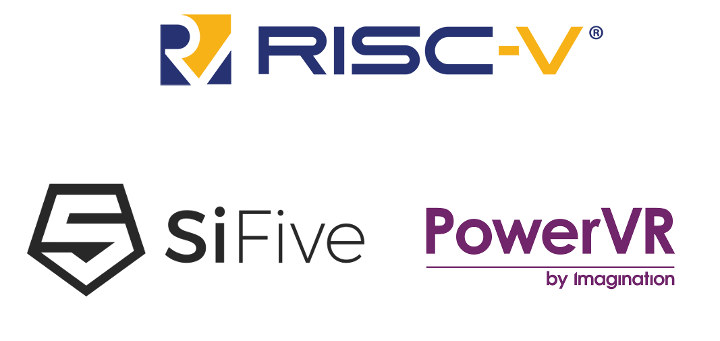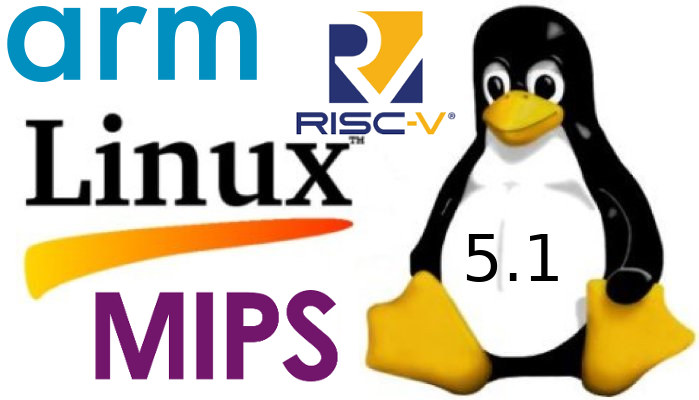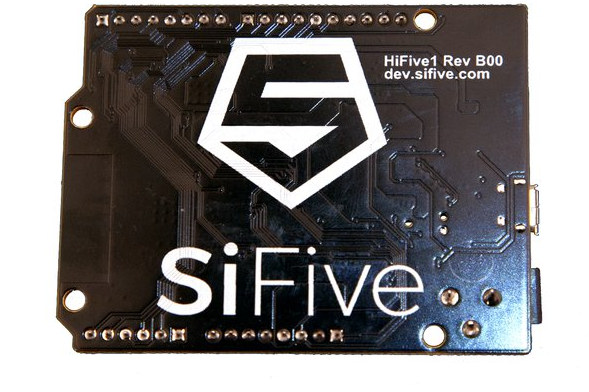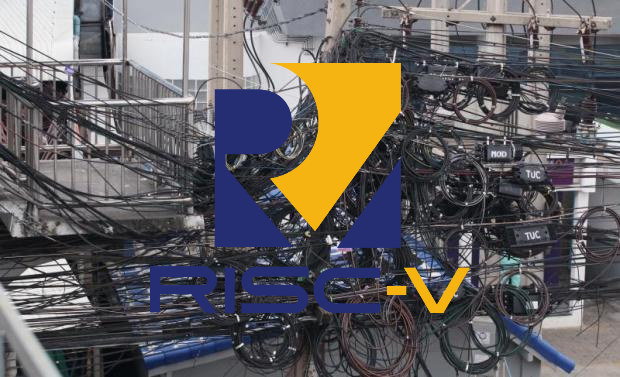Last year RISC-V cores made it into low-cost hardware with neural network and audio accelerator to speed up artificial intelligence workloads at the edge such as object recognition, and speech processing. More precisely, Kendryte K210 dual-core RISC-V processor was found in Sipeed MAIX modules and boards going for $5 and up. Since then a few other variants and kits have been made available including Seeed Studio Grove AI HAT that works connected to a Raspberry Pi or in standalone mode. Seeed Studio has now released another board with Kendryte K210 RISC-V AI processor, but based on Arduino UNO form factor and equipped with an ESP32 module for WiFi and Bluetooth connectivity. Meet Sipeed Maixduino SBC. Sipeed Maixduino specifications: AI Module – Sipeed M1 with Kendryte K210 dual-core RISC-V processor @ 600 MHz, KPU Convolutional Neural Network (CNN) hardware accelerator, APU audio hardware accelerator, 8 MB general purpose SRAM including 5.9MB […]
SiFive RISC-V Processors to Support Imagination PowerVR GPU and NNA IP Cores
RISC-V is getting more popular and mature as development progress, but if you want a system with RISC-V and a GPU so far you had to use a PCIe graphics card which is not cost-effective nor practical for most applications based on RISC-V processor. What is needed is some GPU IP that will glue with RISC-V core. Developing a new GPU is not an easy task (understatement of the month) so it would make sense to go with solutions available on the market. However, Arm Mali is tied to Arm Cortex cores and Arm is unlikely to want to help RISC-V take away their market share, and Adreno and VideoCore are owned by respectively Qualcomm and Broadcom which are unwilling to provide their GPU IP to third parties. This basically leaves us with Vivante and Imagination. Vivante may have made the most sense since open-source graphics drivers do exist (Etnaviv), […]
MORPHEUS Claims to be an Unhackable RISC-V Processor Architecture
Code gets continuously written and updated for new features, optimizations and so on. Those extra lines of code sometimes come at a cost: a security bug gets inadvertently introduced into the code base. The bug eventually gets discovered, a report is filled, and a software fix is committed to solve the issue, before the new software or firmware to push to the end user. This cycle repeats ever and ever, and this means virtually no software or device can be considered totally secure. The University of Michigan has developed a new processor architecture called MORPHEUS, and that blocks potential attacks by encrypting and randomly reshuffling key bits of its own code and data several times per second through a “Churn Unit”. The new RISC-V based processor architecture does not aim to solve all security issues, but focuses specifically on control-flow attacks made possible for example by buffer overflows: Attacks often […]
Linux 5.1 Release – Main Changes, Arm, MIPS & RISC-V Architectures
Linus Torvalds has just announced the release of Linux 5.1: So it’s a bit later in the day than I usually do this, just because I was waffling about the release. Partly because I got some small pull requests today, but mostly just because I wasn’t looking forward to the timing of this upcoming 5.2 merge window. But the last-minute pull requests really weren’t big enough to justify delaying things over, and hopefully the merge window timing won’t be all that painful either. I just happen to have the college graduation of my oldest happen right smack dab in the middle of the upcoming merge window, so I might be effectively offline for a few days there. If worst comes to worst, I’ll extend it to make it all work, but I don’t think it will be needed. Anyway, on to 5.1 itself. The past week has been pretty calm, […]
Grove AI HAT Helps Raspberry Pi Run Edge Computing Workloads
Last year we wrote about Kendryte K210 dual core RISC-V processor specifically designed for for machine vision and machine hearing as well as the corresponding Kendryte KD233 which enables inference at the edge, e.g. tasks such as face recognition or object detection. Latter on we found the processor in Sipeed M1 module which went for as low as $5 in a crowdfunding campaign, and was fitted to some low cost boards now selling for $12.90 on Seeed Studio. The latter company has now designed Grove AI HAT that aims to assist Raspberry Pi in running the edge computing workloads previously described, as exposes 6 Grove interfaces to extend functionality with some of the Grove add-on modules. Grove AI HAT specifications: AI Module – Sipeed “MAIX” M1 with Kendryte K210 dual core RISC-V processor @ 600 MHz, KPU Convolutional Neural Network (CNN) hardware accelerator, APU audio hardware accelerator, 8 MB general […]
SiFive S2 RISC-V Core may be the World’s Smallest 64-bit Embedded Core
Last year, SiFive introduced their first RISC-V cores competing with Arm Cortex-R family of processors thanks to their S7 Series 64-bit RISC-V Core IP providing an answer to Arm Cortex-R7/R8 32-bit real-time processors. The company has now announced the SiFive S2 RISC-V core that it claims to be the world’s smallest 64-bit embedded core, and also the first SiFive IP core without any direct competitive equivalent in the market. For now, there’s only one core in the family with SiFive S21 offering the following key features: RISC-V ISA – RV64IMAC 64-bit AXI Ports Machine and User Mode with 4 Region Physical Memory Protection 3-stage pipeline with Simultaneous Instruction and Data Access 2 Banks of Tightly Integrated Memory (TIM) CLIC (Core Local Interrupt Controller) with 127 interrupts Advanced debug with 4 hardware breakpoints/watchpoints Performance – 1.6 DMIPS/MHz; 3.2 Coremarks/MHz The company compares its to the SiFive S5 cores, which I had […]
HiFive1 Rev B Board Gets FE310-G002 RISC-V Processor, WiFi & Bluetooth Module
SiFive launched what may have been the very first RISC-V development board in 2016 thanks to their HiFive1 Arduino compatible board powered by Freedom E310 (FE310) open source RISC-V processor. The company has now launched an upgrade version of the processor and board. Meet FE310-G002 processor and HiFive1 Rev B development board. HiFive1 Rev B development board specifications with new features highlighted in bold or stricken-through: MCU – SiFive Freedom E310-G0002 32-bit RV32IMAC processor @ up to 320+ MHz (1.61 DMIPS/MHz) Storage – 32 Mbit SPI flash (was 128 Mbit in the first version) Connectivity – ESP32-SOLO-1 WiFi & Bluetooth module I/Os 19x Digital I/O Pins 19x external interrupt pins 1x external wakeup pin 9x PWM pins 1/3 SPI Controllers/HW CS Pins I/O Voltages – 3.3V or 5V supported; note: bidirectional level shifters removed so FE310-G002 can drive the I/O pins directly at 3.3V only. USB – 1x micro USB […]
RISC-V Compliance Tests Aim to Address RISC-V Fragmentation
In the x86 world, one operating system image can usually run on all hardware thanks to clearly defined instruction sets, hardware and software requirements. Arm provides most flexibility in terms of peripherals, while having a fixed set of intrusions for a given architecture (e.g. Armv8, Armv7…), and this lead to fragmentation, so that in the past you had to customize your software with board files and other tweaks, and provide one binary per board, leading to lots of fragmentation. With device trees, things improved a bit, but there are still few images that will run on multiple boards without modifications. RISC-V provides even more flexibility that Arm since you can mess up with the instructions set with designers able to add or remove instructions as they see fit for their application. One can easily imagine how this can lead to a complete mess with binary code only running on a […]










